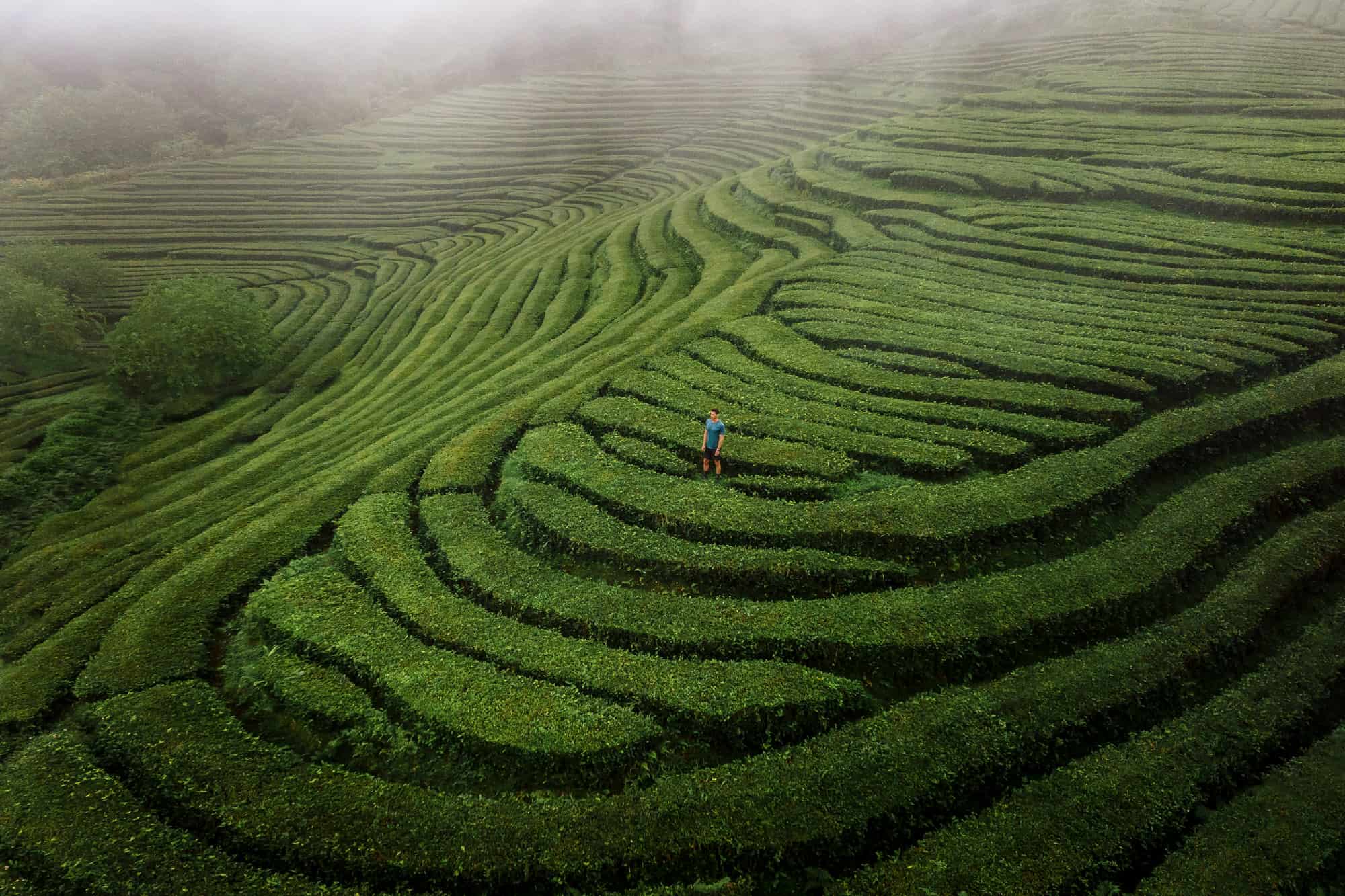The Azores Tea Fields: The Lush Gorreana Plantation

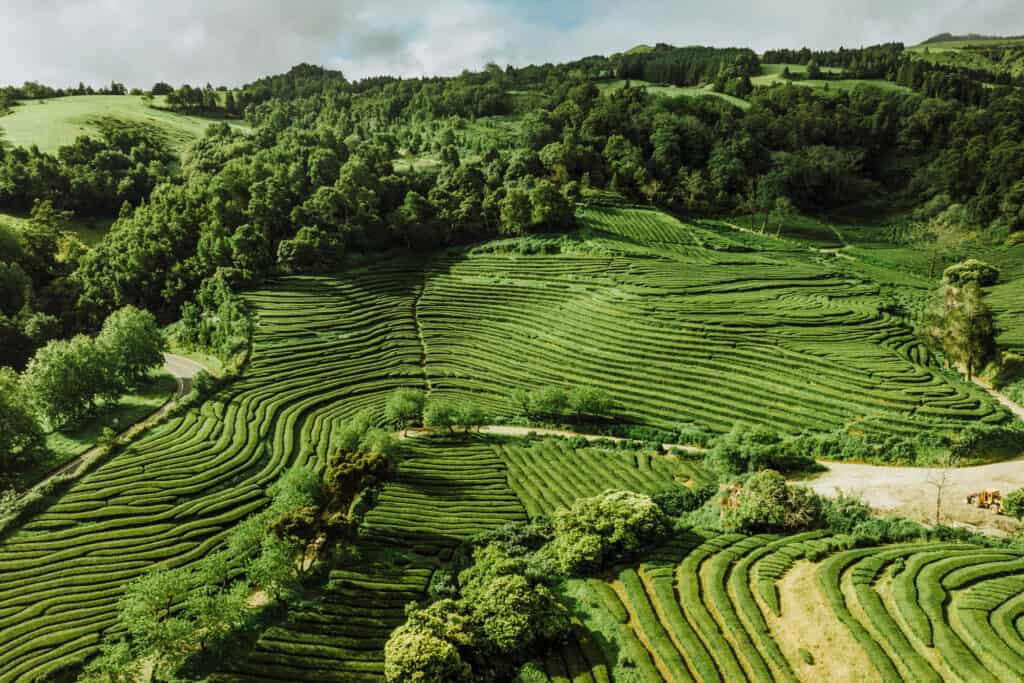
BY JARED DILLINGHAM
VISIT THE AZORES TEA FIELDS: THE CHA GORREANA PLANTATION
The famous Azores tea fields are part of the Gorreana Tea Factory and Plantation, located on the island of Sao Miguel. It is one of the oldest tea plantations in Europe (if not the oldest), and has been producing tea since 1883.
You can learn all about the tea-making process in the Azores, but many people go just to hike through the mazes in the gorgeous green tea fields on the plantation!
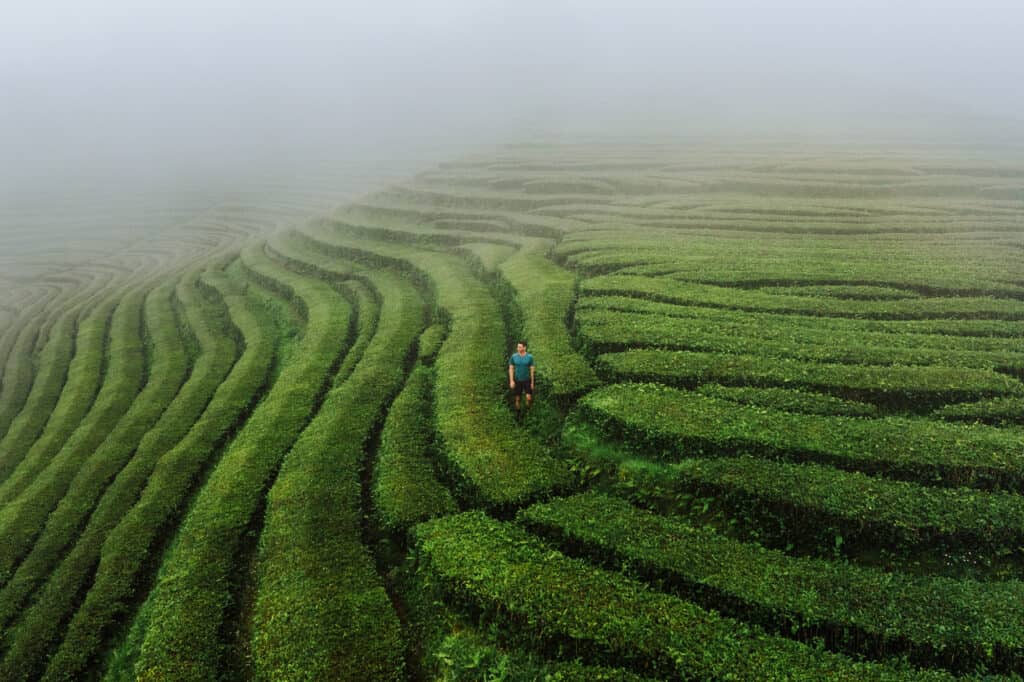
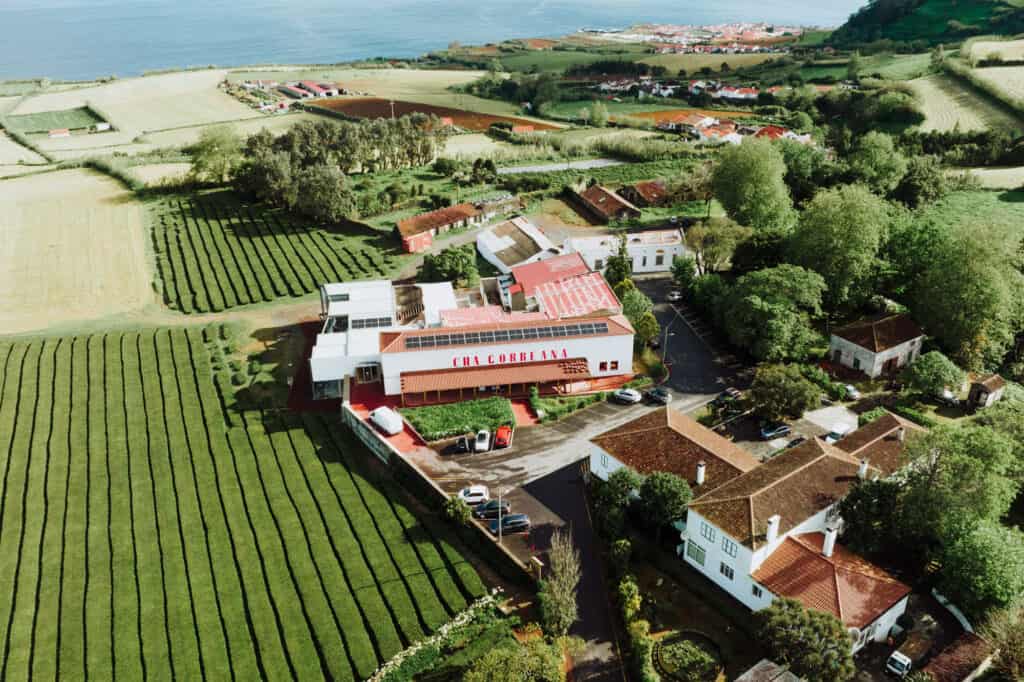
➡️ Click to Book: TOUR of Tea Fields
➡️ Click to Book: PRIVATE TOUR of Sao Miguel
Azores Tea Fields Location
The Gorreana Tea Plantation is on the northern coast of Sao Miguel, which is known for its lush green landscapes and favorable climate for tea cultivation. The unique combination of volcanic soil, mild temperatures, and high humidity provides ideal conditions for growing tea.
The beautiful green Azores tea fields are right along the main highway which runs along the northern coast of Sao Miguel (EN1-1A). The closest big town is Ribeira Grande.
The drive time from any point on the island is relatively short:
- Ponta Delgada to Gorreana Tea Fields: 30 kilometers
- Furnas to Gorreana Tea Fields: 15 kilometers
- Nordeste to Goreana Tea Fields: 28 kilometers
Renting a Car in the Azores
The best way to get around Sao Miguel is by renting a car. The roads are easy to navigate, and there’s very little traffic on the island.
Discover Cars is the option I use in the Azores, because they compare all possible rental options at once. The search will include the local Azores-based car rental companies, like Ilha Verde, in addition to the internationally-known brands.
🚘 Click to Book: Rental Cars in the Azores

Hiking in the Azores Tea Fields
If you have no interest in tea, a visit to the Azores tea fields at the Gorreana Plantation is still worth it. The tea fields are open to the general public to explore 24/7. There are no gates and no fees, so you’re free to explore and walk around any time.
You’ll find signs for the trails near the main Gorreana building. They’ll follow the roads and irrigation channels, through pastures and forests.
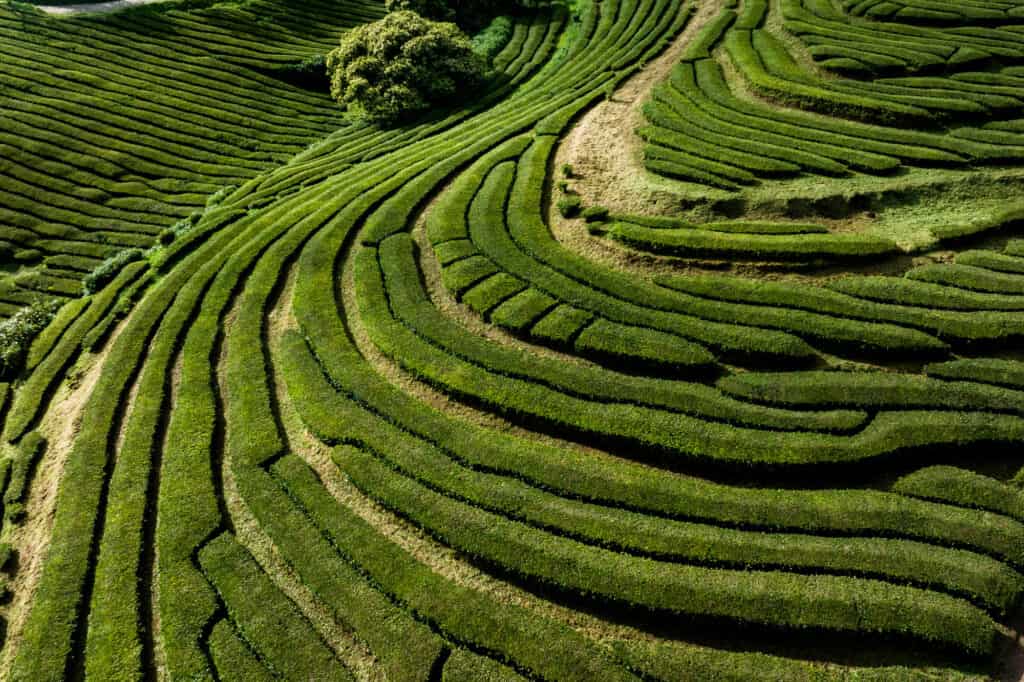
The tea leaves are hand-picked by crews you’ll see out in the fields. The rows of bushes are impeccably trimmed and maintained, into beautiful mazes.
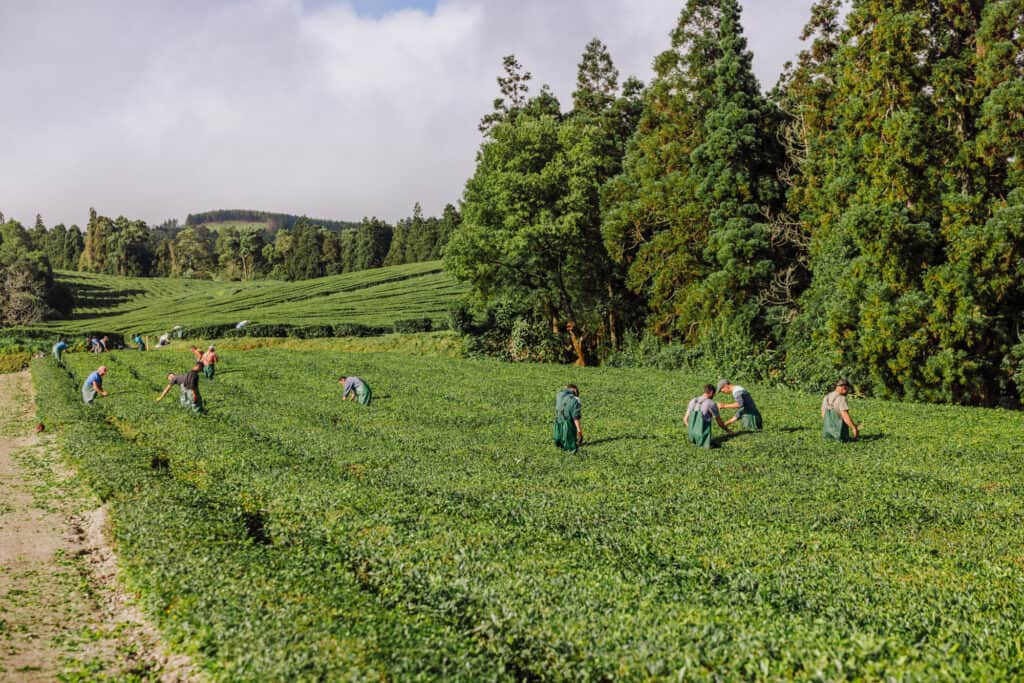
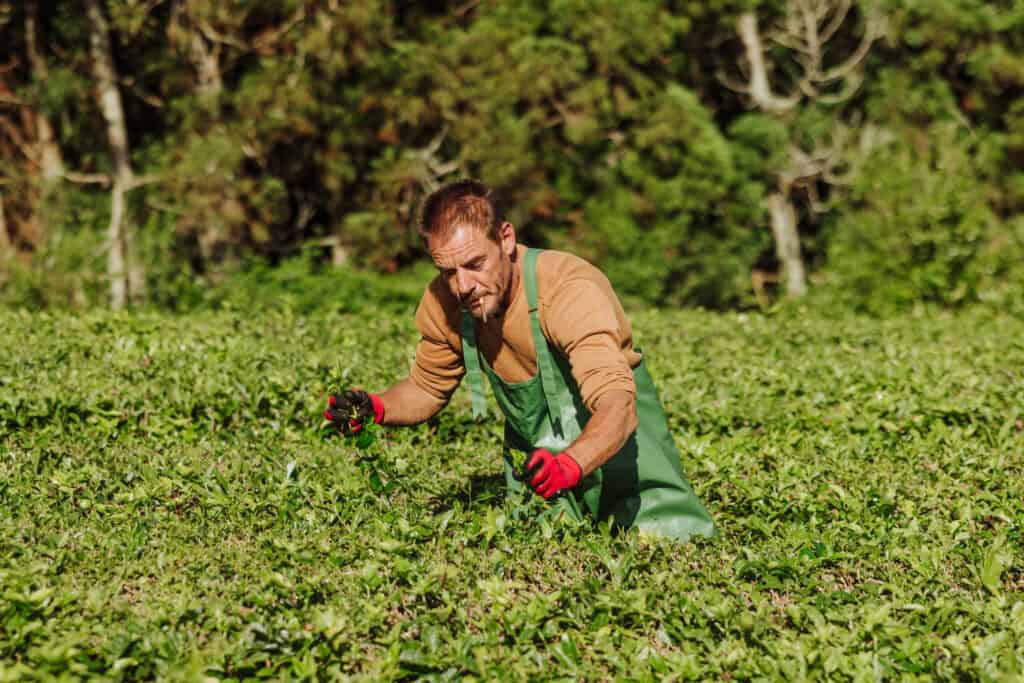
The geometric designs, created by the natural curvature of the hills and the shrub planting and trimming over the years, is mesmerizing from the ground and from the drone above.
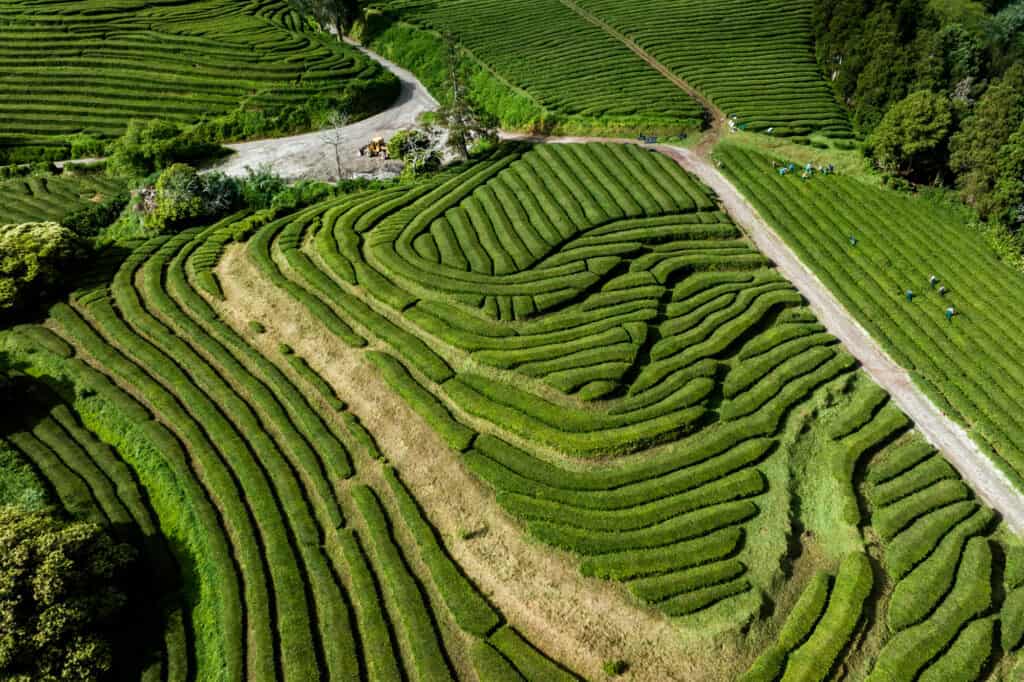
We stopped by the Azores tea fields on two separate occasions and had two very different experiences. One morning was bright and sunny, so the hillsides were glowing in a vibrant green.
Another afternoon, we drove by as the fog moved in. It provided equally-beautiful photography opportunities and a vastly different feel to the whole place!
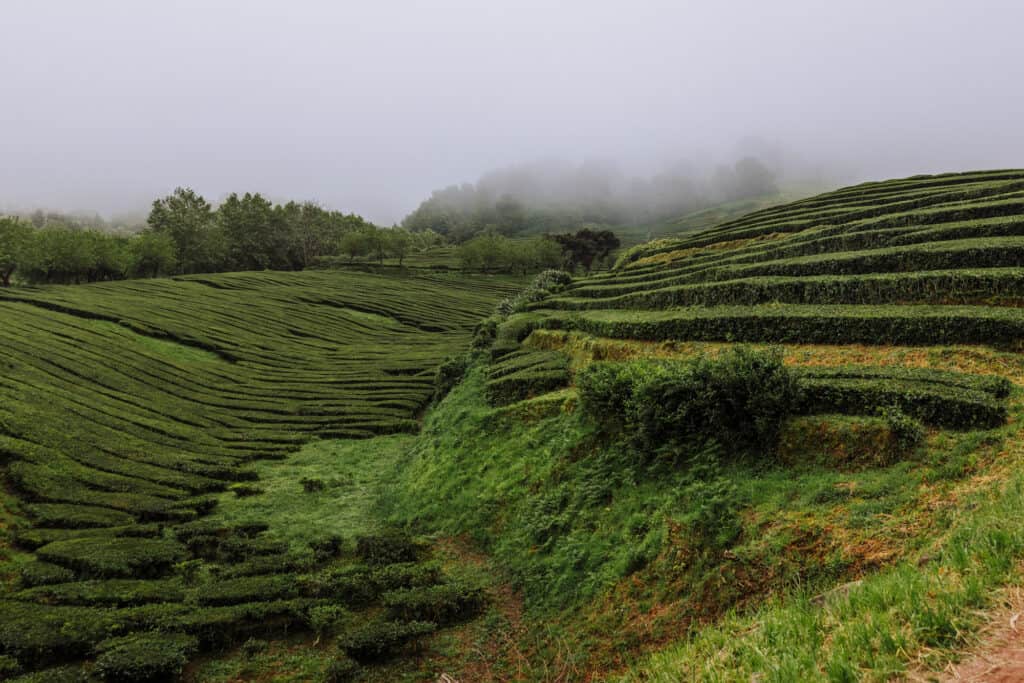
A word of caution for those of us who aren’t fans of spiders: the tea fields are full of spider webs! Walking between the rows of bushes, you’ll be unable to avoid walking through webs. If that bothers you, just stick to the trails and roads through the plantation and your hike will be spider-free!
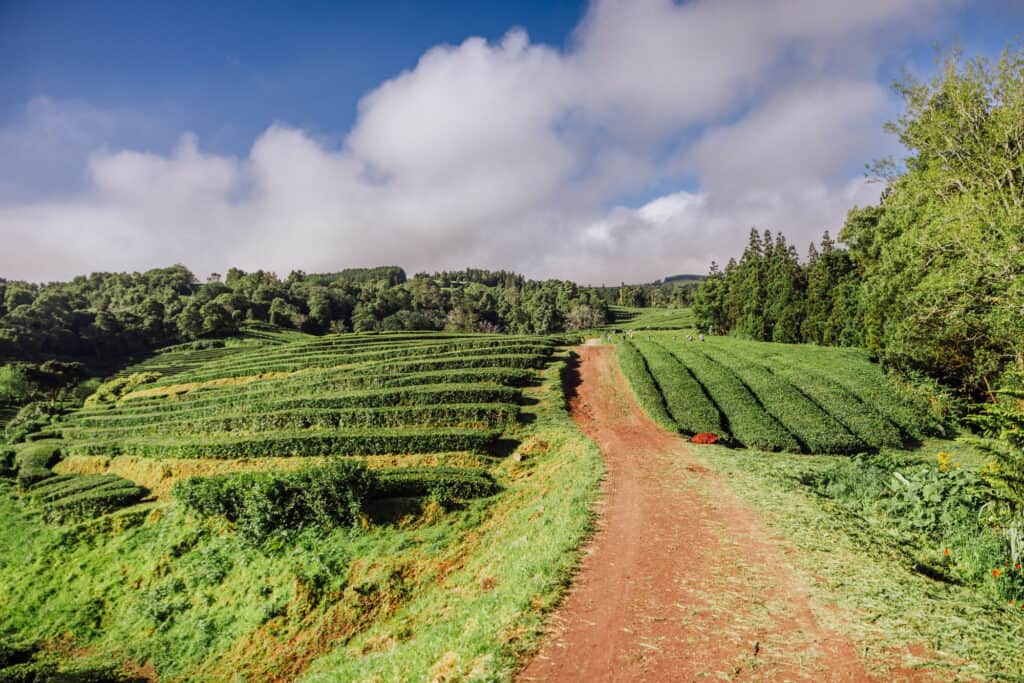
Gorreana Tea
Cha Gorreana follows traditional methods of tea production, which prioritize quality and craftsmanship. The plantation has maintained these traditional processes over the years to preserve the authenticity and unique flavor profiles of their teas.
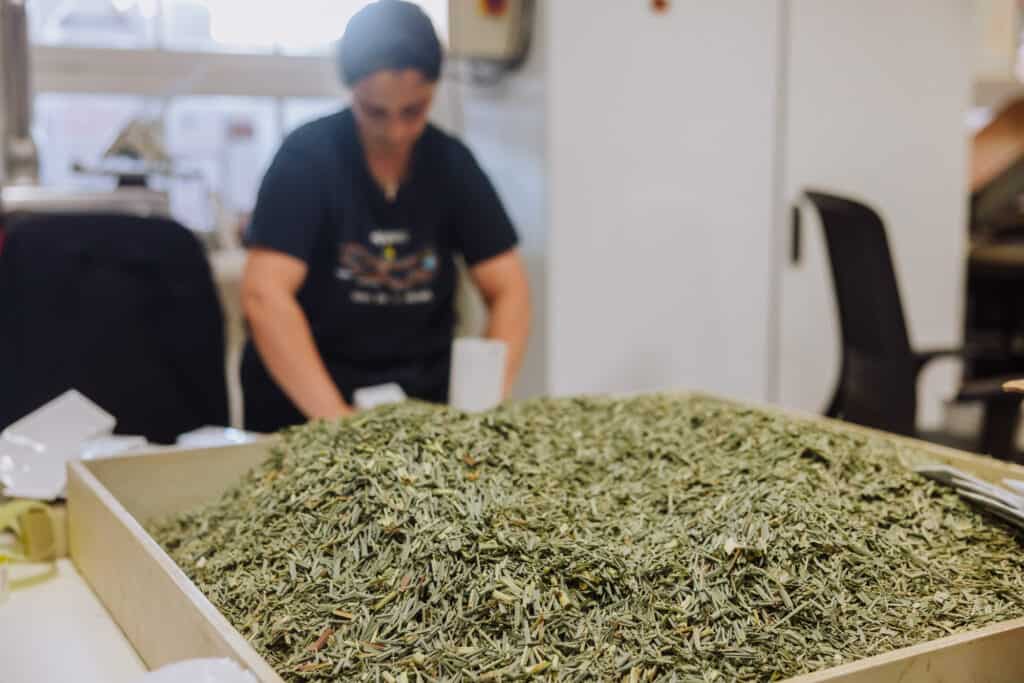
Cha Gorreana specializes in the production of two main types of tea: green tea and black tea.
The tea is made from the Camellia sinensis plant, which is cultivated and harvested on the plantation. The leaves are hand-picked and then processed using traditional methods and clipping tools.
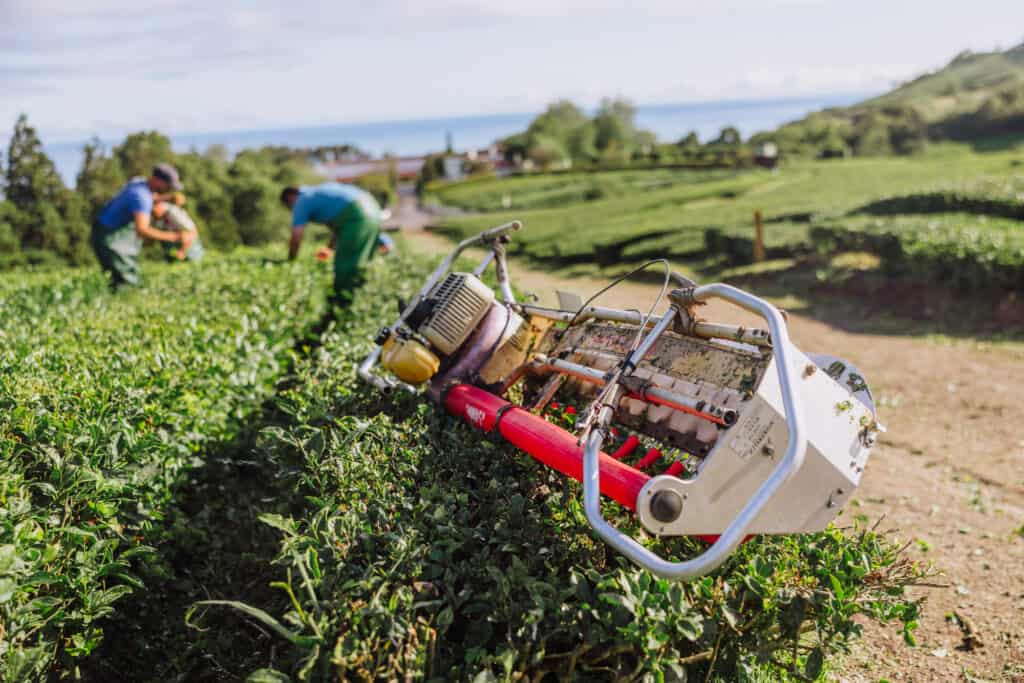
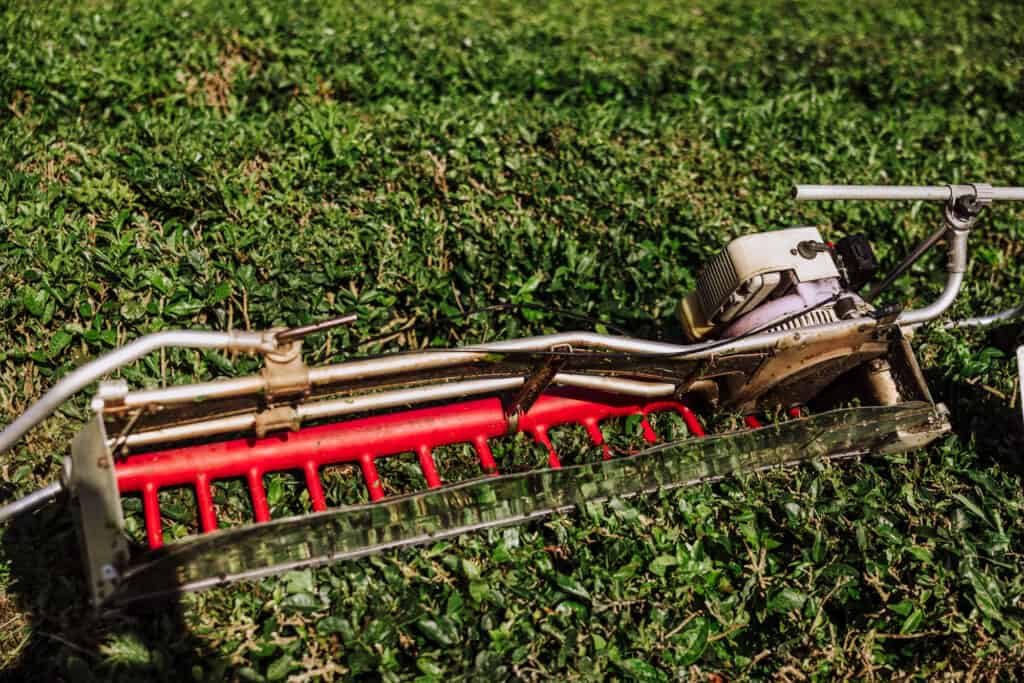
Green tea is made by steaming the leaves to prevent oxidation, preserving its natural color and flavor.
Black tea, on the other hand, undergoes a process called fermentation, where the leaves are exposed to oxygen to develop its characteristic flavor and dark color.
Quality of Azorean Tea from Sao Miguel
Azorean tea has gained recognition and appreciation among tea enthusiasts for its unique flavors.
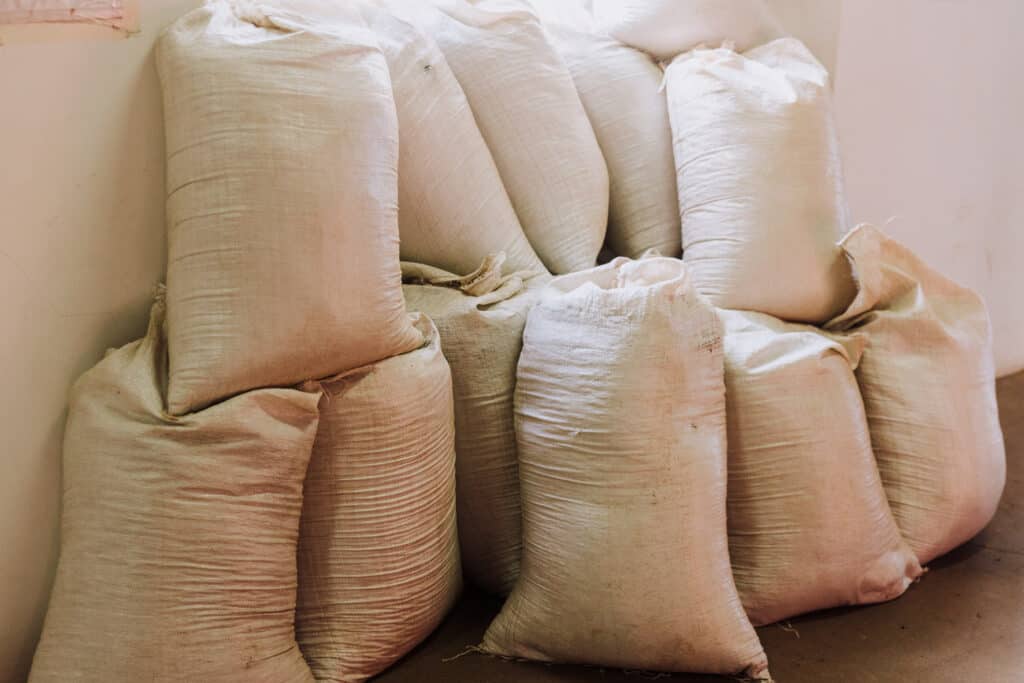
The quality of Azorean tea, specifically tea produced in the Gorreana Tea Plantation, is generally considered to be high.
Here are some factors that contribute to the quality of Azorean tea:
- Unique Terroir: The Azores’ volcanic soil, abundant rainfall, and temperate climate create a unique terroir that influences the flavor and characteristics of the tea. The combination of volcanic minerals, oceanic breezes, and high humidity contributes to the distinct taste profile of Azorean tea.
- Hand-Picking: The tea leaves in the Azores, including those at Gorreana Tea Plantation, are typically hand-picked. This labor-intensive method allows for careful selection of the finest and freshest tea leaves, resulting in higher quality teas.
- Traditional Production Methods: The tea production at Gorreana follows traditional artisanal methods. These methods prioritize the preservation of flavors, aromas, and nutritional qualities of the tea leaves.
- Environmental Factors: The Azores’ pristine natural environment and sustainable farming practices contribute to the quality of Azorean tea. The absence of industrial pollution and the reliance on organic or low-impact cultivation methods help ensure the production of clean and pure teas.
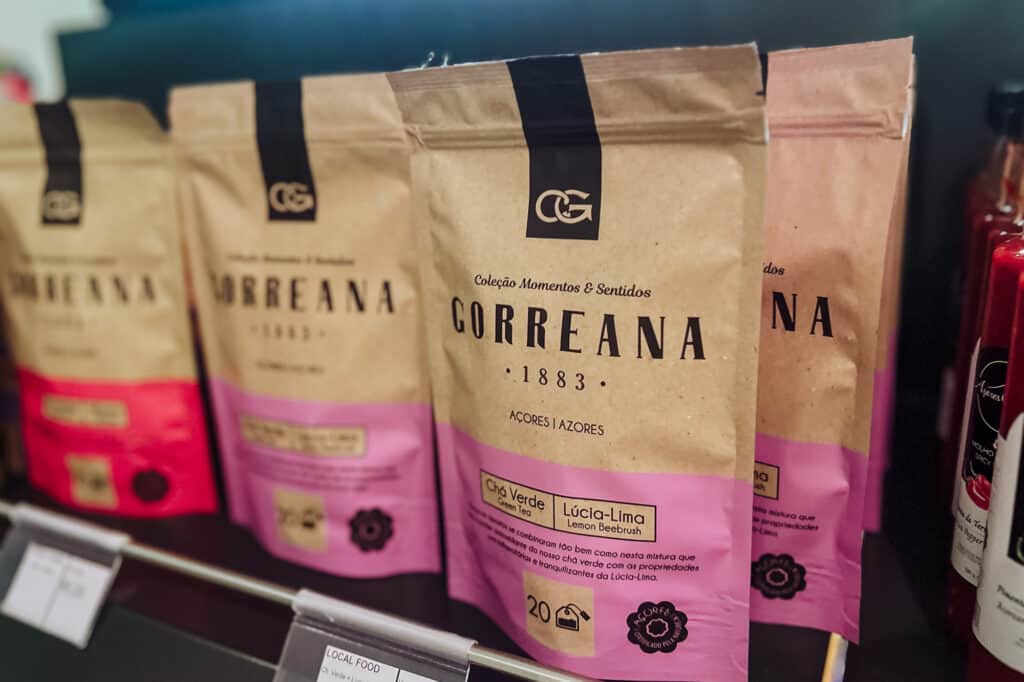
Cha Gorreana Tea-Making Process
The tea-making process at Gorreana follows a series of steps to transform the freshly harvested tea leaves into the final product.
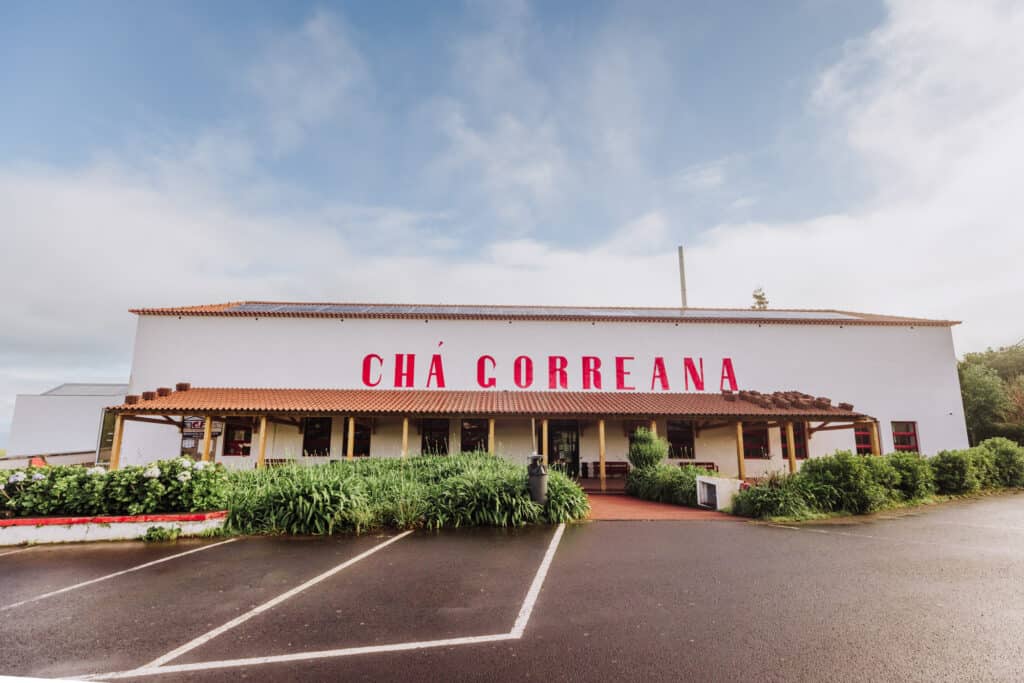
Here is an overview of the traditional tea making process at Gorreana:
- Harvesting: The tea leaves are hand-picked from the tea bushes on the plantation. Only the top-most tender leaves and buds are selected, as they provide the best flavor and quality.
- Withering: The freshly-harvested tea leaves undergo a withering process, where they are spread out on large trays or racks. This step allows for the removal of excess moisture from the leaves.
- Rolling: The withered tea leaves are gently rolled to shape them and break down their cell walls. This process helps release the natural juices and flavors of the tea leaves.
- Fermentation/Oxidation (only for black tea): In the case of black tea production, the rolled leaves are spread out in a controlled environment with specific temperature and humidity conditions to initiate the oxidation process. The tea leaves undergo enzymatic reactions, which help them develop their flavors.
- Firing: After fermentation (for black tea) or rolling (for green tea), the tea leaves are heated to halt the oxidation process. Firing is done through a process of steaming or pan-firing. This step helps lock in the flavors and preserve the quality of the tea.
- Sorting and Grading: The fired tea leaves are sorted based on their size, shape, and quality. This process involves separating the whole leaves from broken leaves or tea dust. The sorted tea leaves are then graded into different categories based on their quality.
- Packaging: The final step is packaging the tea. At Gorreana, the tea is typically packed into various forms, such as loose leaf tea or tea bags, ready for distribution and sale.
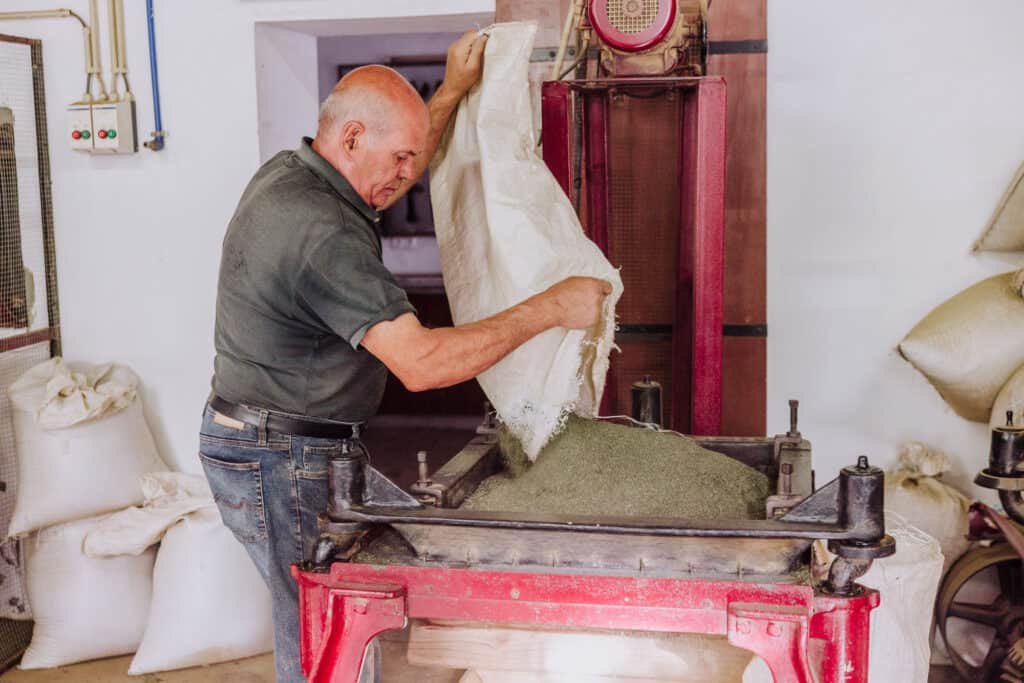
Cha Gorreana Tea Factory Tours
Visitors to the Gorreana Tea Factory and Plantation can take guided tours to learn about the tea production process, from cultivation to packaging.
If you don’t have a rental car, you can easily book a guide or driver from Ponta Delgada to take you to the tea fields.
➡️ Click to Book: TOUR of Tea Fields & Sao Miguel
➡️ Click to Book: PRIVATE TOUR of Sao Miguel
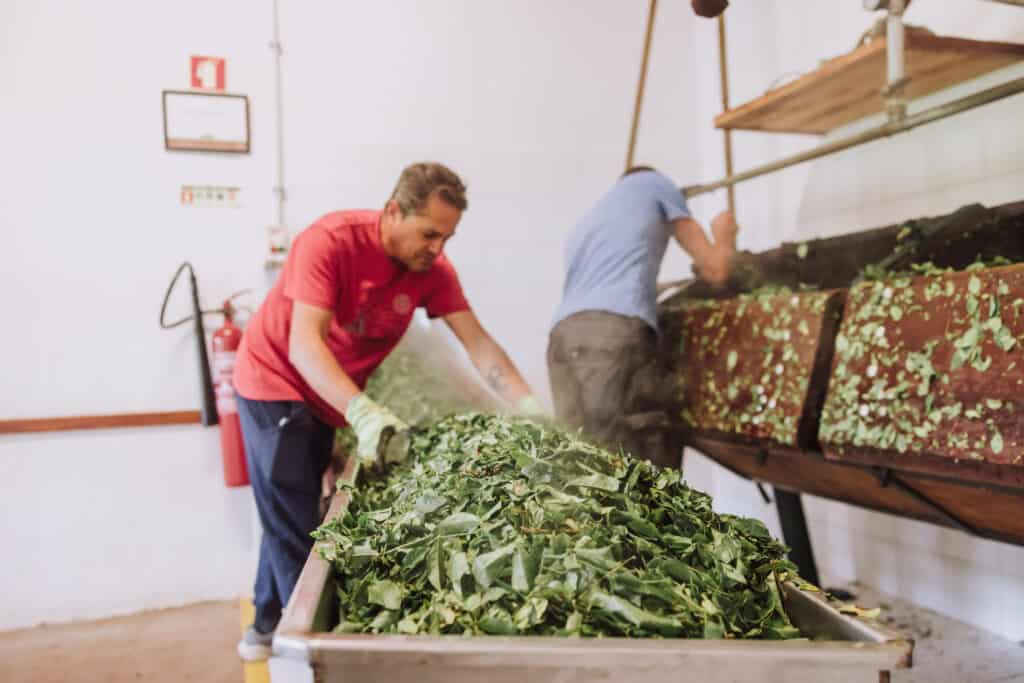
The tours provide insights into the history of the plantation, tea tasting sessions, and a chance to explore the beautiful tea gardens.
The plantation also has a tea shop where visitors can purchase a variety of teas produced on-site.
The Gorreana Tea Factory is open daily from April through October. During the harvest season, you can watch the entire tea-making process.
- Monday – Friday: 8:00am – 6:00pm
- Weekends: 9:00am – 6:00pm
Again, the pantation fields are open all the time to explore on your own.
History of the Cha Gorreana Tea Plantation
The history of Gorreana Tea dates back to the late 19th century and is intertwined with the agricultural heritage of the Azores. The first tea seeds arrived in the early part of the 19th Century from Brazil. By the mid-1800s, several properties in the Azores were growing tea.
Tea was becoming important to the economy in the Azores, and several factories were built.
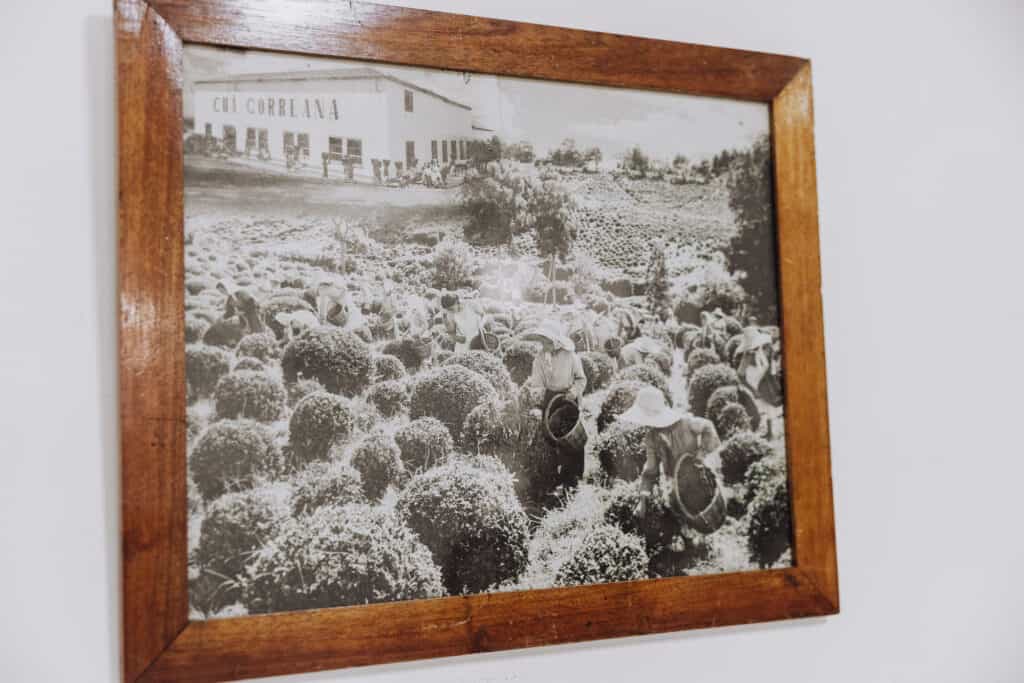
Here’s an overview of the history of Gorreana Tea:
Founding of the Plantation
The Gorreana Tea Plantation was established in 1883 by Ermelinda Gago da Câmara. She introduced the tea plant (Camellia sinensis) to the island of Sao Miguel, part of the Azores, and began cultivating tea on her family’s estate in Gorreana. The plantation was passed down through generations and is still owned and operated by the same family.
In the early years, the plantation focused on experimenting with different tea varieties and cultivation techniques to adapt to the unique climate and volcanic soil of the Azores. The estate thrived, and tea production became an important part of the local economy.
Expansion and Modernization
As demand for Azorean tea grew, the Gorreana Tea Plantation expanded its operations. In the early 20th century, modern machinery was introduced to improve efficiency and quality. New machinery mechanized the process of rolling, drying, and calibrating the tea plants and leaves.
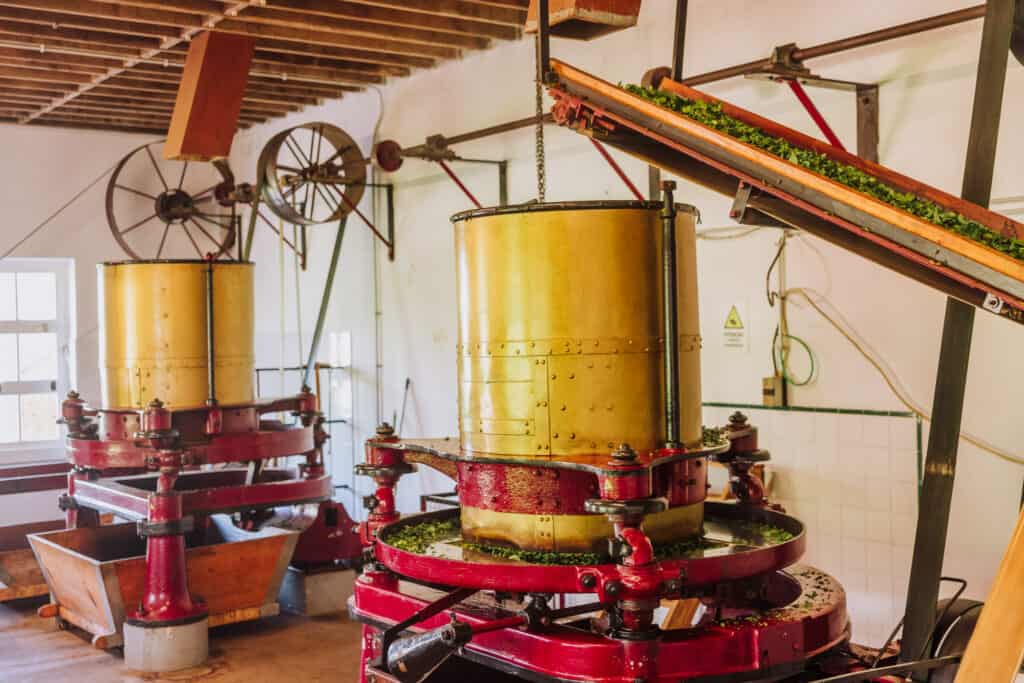
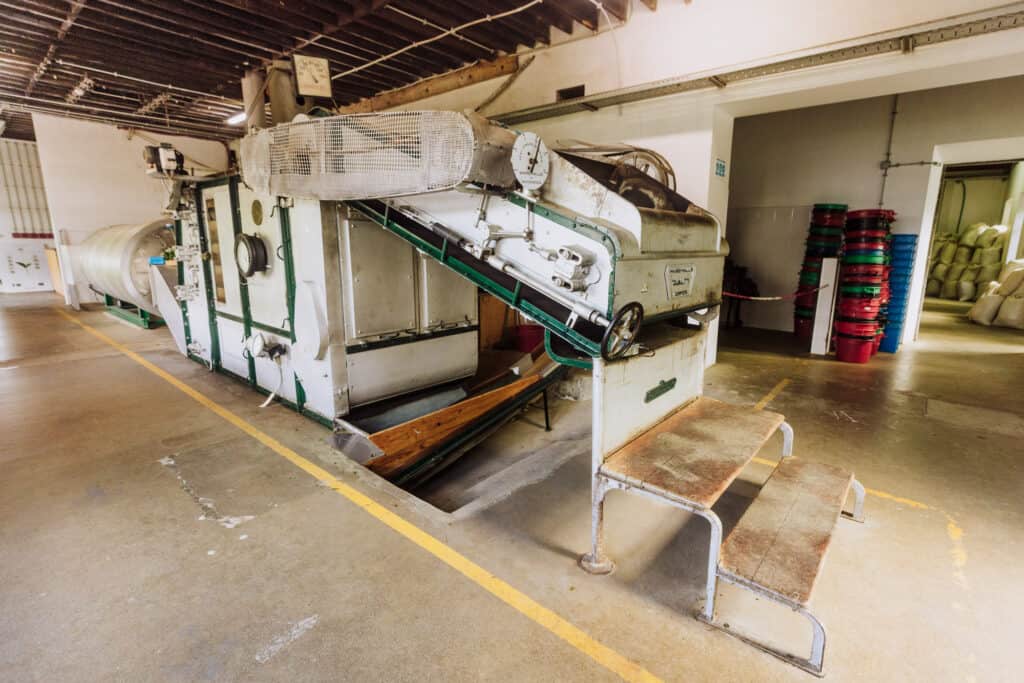
As you’ll see on-site, the plant still maintains a balance between traditional methods and modern technology.
Like many tea plantations, Gorreana faced challenges over the years, including natural disasters and fluctuations in market demand. However, the family-owned estate persevered, maintaining its commitment to tea production and preserving the legacy of Azorean tea.
Preservation of Tradition
Gorreana Tea Plantation takes pride in preserving traditional tea-making techniques. The plantation follows time-honored practices, such as hand-picking tea leaves and using withering, rolling, fermentation (for black tea), and firing processes to create its teas.
In recent years, Gorreana has become a popular tourist attraction, welcoming visitors to explore the tea fields, take guided tours, and taste their teas.
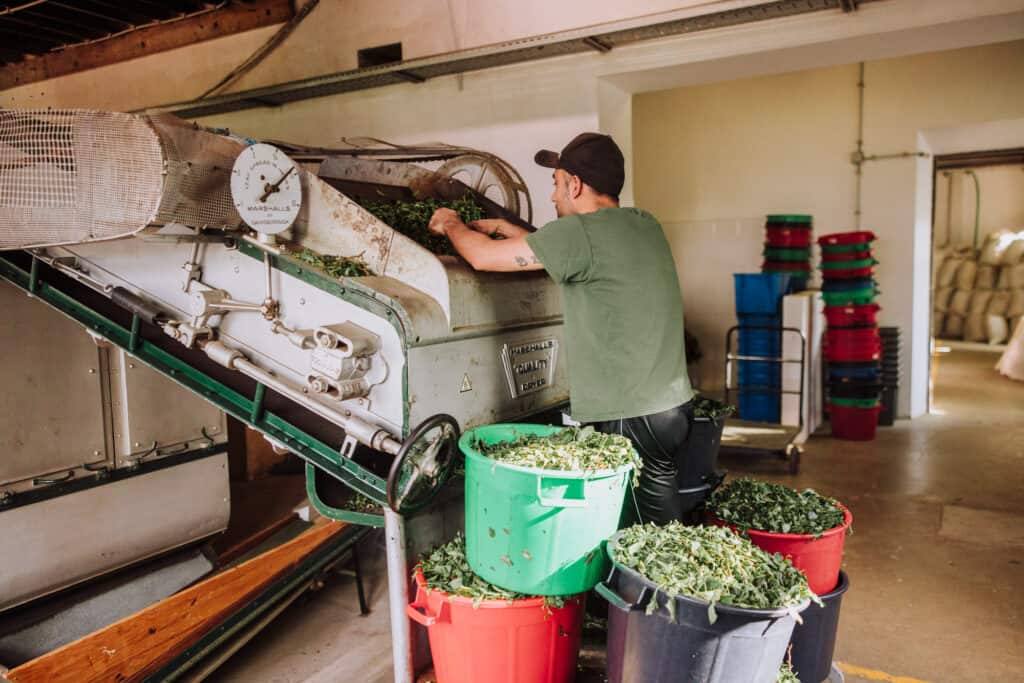

If You Like the Azores Tea Fields…
You might also enjoy a visit to the family-owned vineyard and winery on Sao Miguel!
The climate, volcanic soil, and topography create unique wines at Quinta da Jardinete. The vineyard is an easy 20-minute drive from Ponta Delgada.
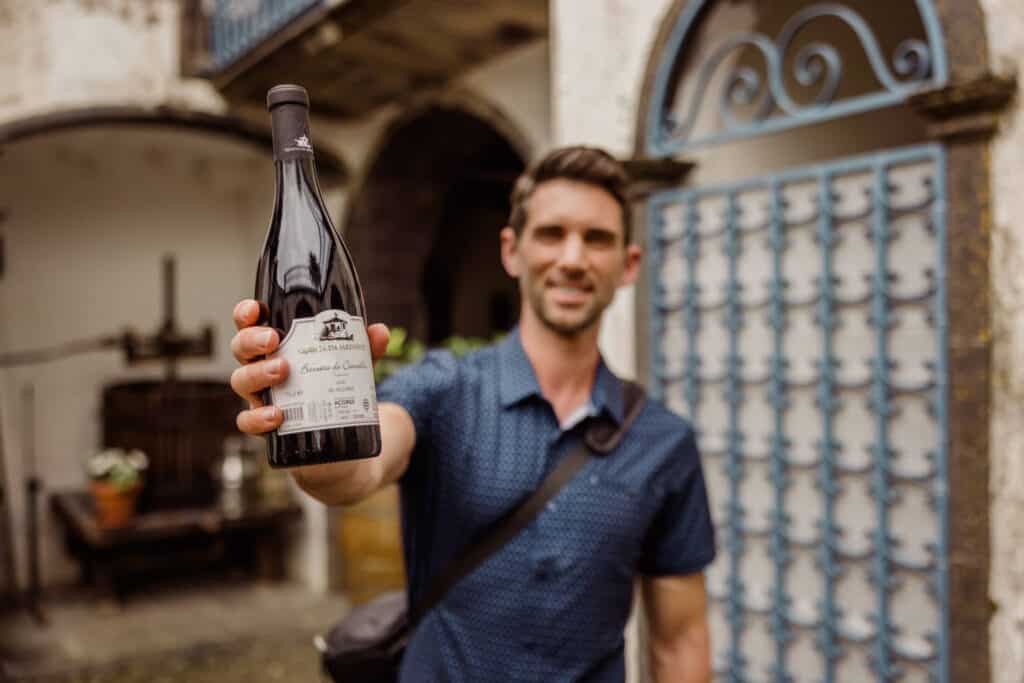
The property was a citrus farm in the 1800s, growing oranges to export to England.
The “jardinete” that gives the winery its name is a small hut, perched on a hill above the main house. A worker was stationed there during the citrus-growing days to watch for ships approaching. He’d signal to the others a trade ship appeared on the horizon, and they’d work as a group to gather and carry bushels of oranges to the harbor to sell.
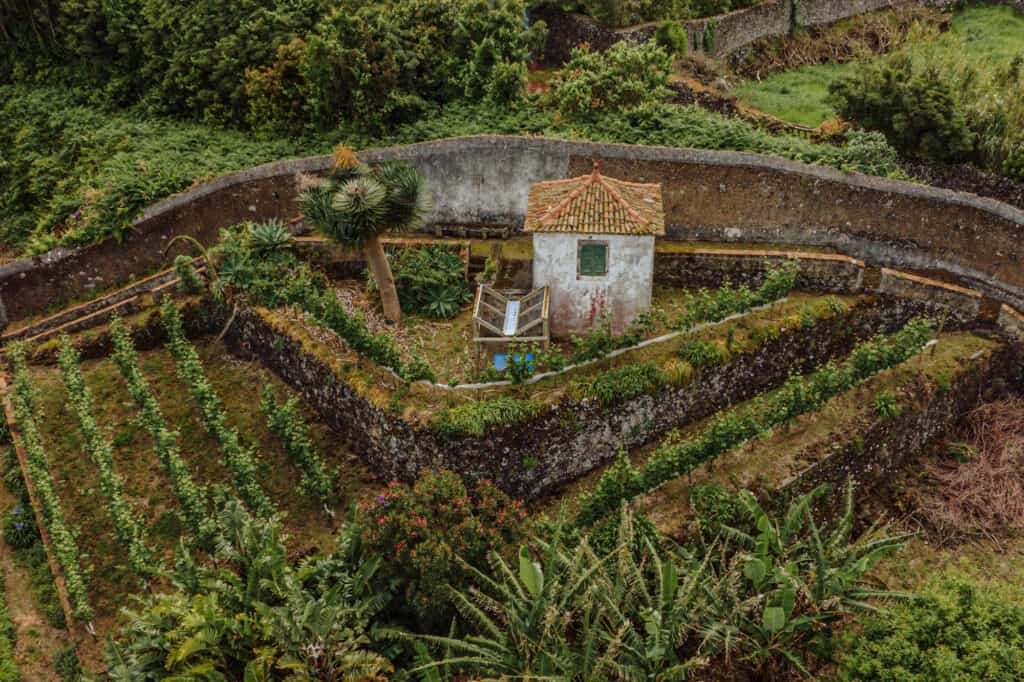
Fast-forward to modern times, a local Azorean family bought the property and started renovations. They discovered the soil was still growing different fruits and vegetables on its own.
They imported vines from Europe and began experimenting with grapes. In 2005, they produced their first wines, and they’ve been growing for the last 20 years or so.
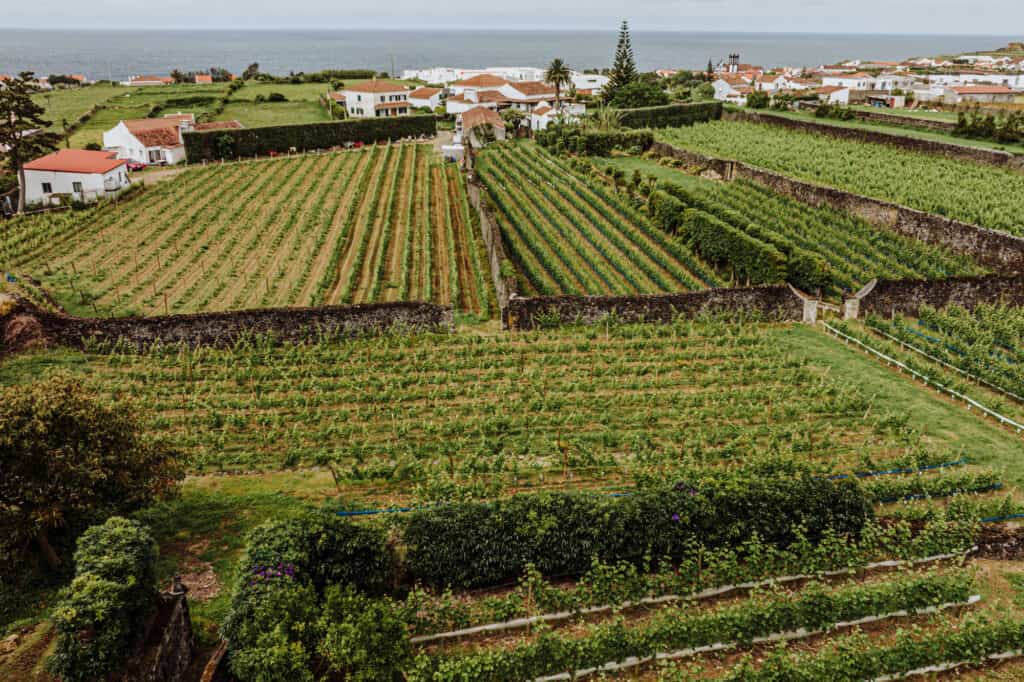
Quinta da Jardinete produces between 16,000 and 18,000 bottles of Azores wine varieties per year. Their yield includes reds, whites, and a smaller amount of rose.
They offer tours Monday through Friday. We just showed up, but it’s best to give them a heads-up that you’re coming:
- www.quintadajardinete.com
- QJardinete@gmail.com
- 351-968-617-382
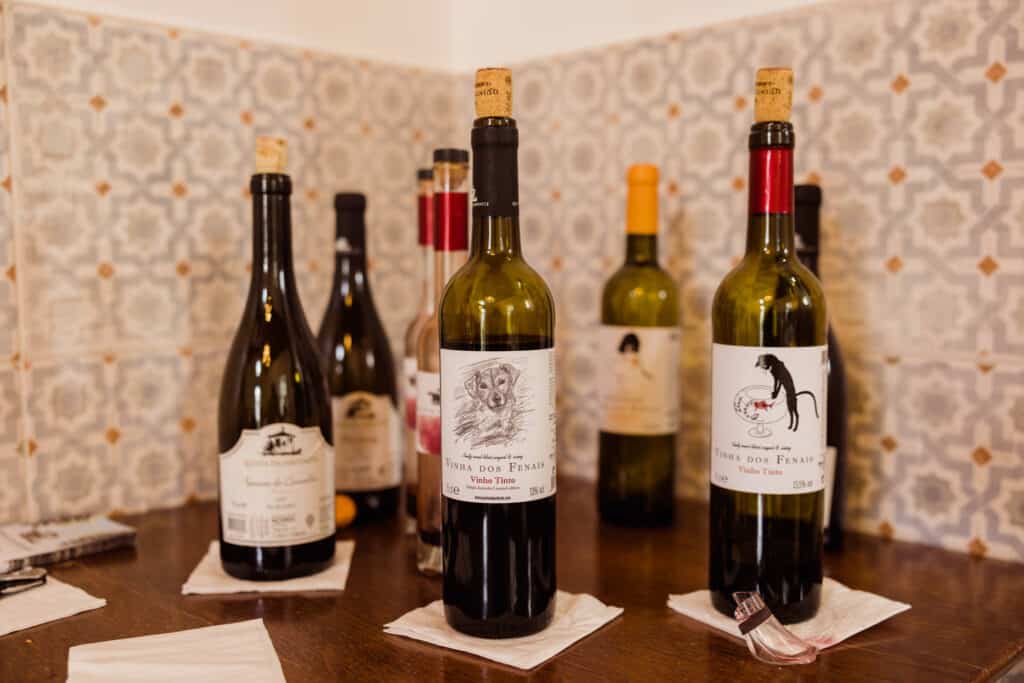
FAQs About the Azores Tea Fields
Let’s tackle a few frequently-asked-questions about the Azores tea fields at the Gorreana Plantation.
Are the Azores the only place in Europe that grows tea?
It’s *one of* the only places in Europe.
Cornwall in the United Kingdom is home to the Tregothnan Estate, which has been growing tea since the 19th century. It’s recognized as the only tea plantation in England.
Limited quantities of tea are also grown in parts of Italy, France, and Spain.
Can you explore the Azores tea plantation on your own, or do you need a tour?
You can wander the fields of the plantation on your own at any time.
You can also walk around pretty freely inside the factory. The stall will just work around you and answer questions as they go about their duties.
Where can you buy Gorreana Tea?
Stores in Europe and America sell tea from the Azores tea fields. Most is shipped to Germany, France, Canada, and the USA.
What’s the difference between black and green tea?
For black tea, the leaves are rolled and partially crushed. This oxidizes them, and after being exposed to the air they’re dried.
For green tea, the leaves are shriveled, then sterilized with steam. This prevents oxidation after rolling, allowing them to keep their vibrant green coloration.
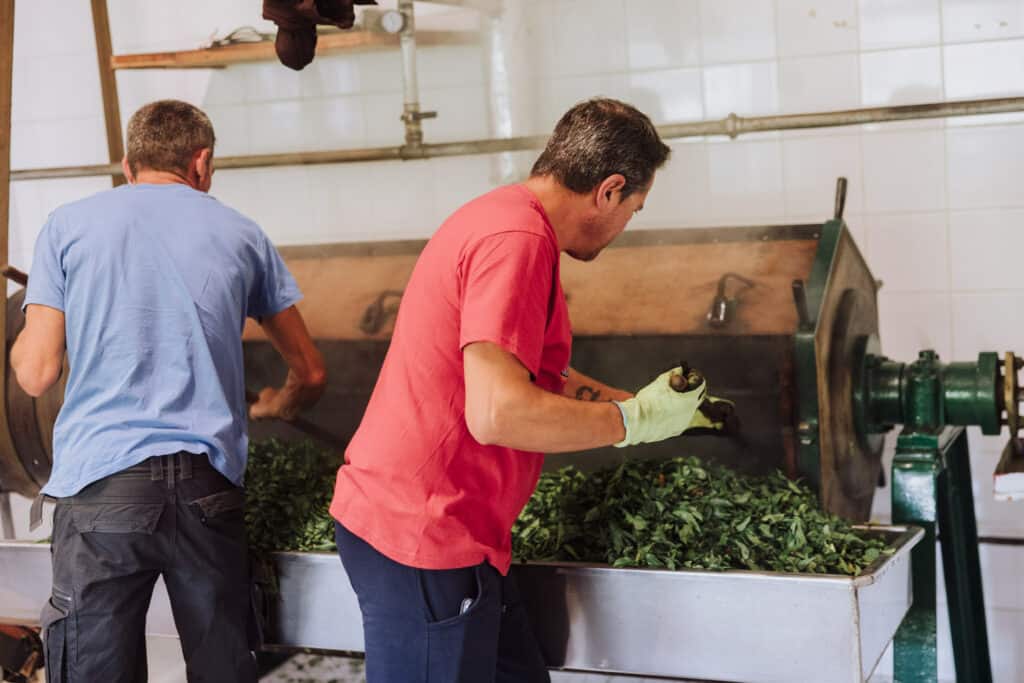
How much tea does the Gorreana Tea Factory produce?
The Azores tea fields produce 40 tons of tea each year, most of which is sold in Europe.
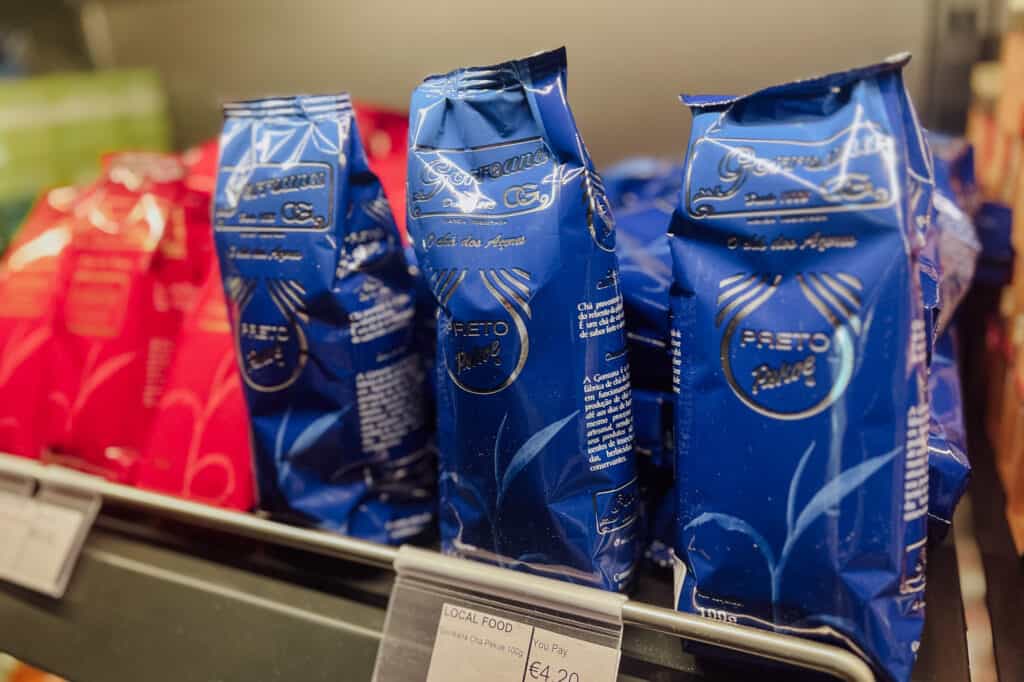
How big are the Azores tea fields?
The Gorreana plantation stretches over 37 hectares, which is about 92 acres.
Wrap: Are the Azores Green Tea Fields Worth a Visit?
Overall, the Gorreana Tea Factory and Plantation offers visitors a unique opportunity to experience the tea culture of the Azores, appreciate the stunning natural surroundings, and learn about the traditions and craftsmanship behind tea production.
We enjoyed our first trek through the Azores tea fields so much that we returned for a second day to take a different trail!
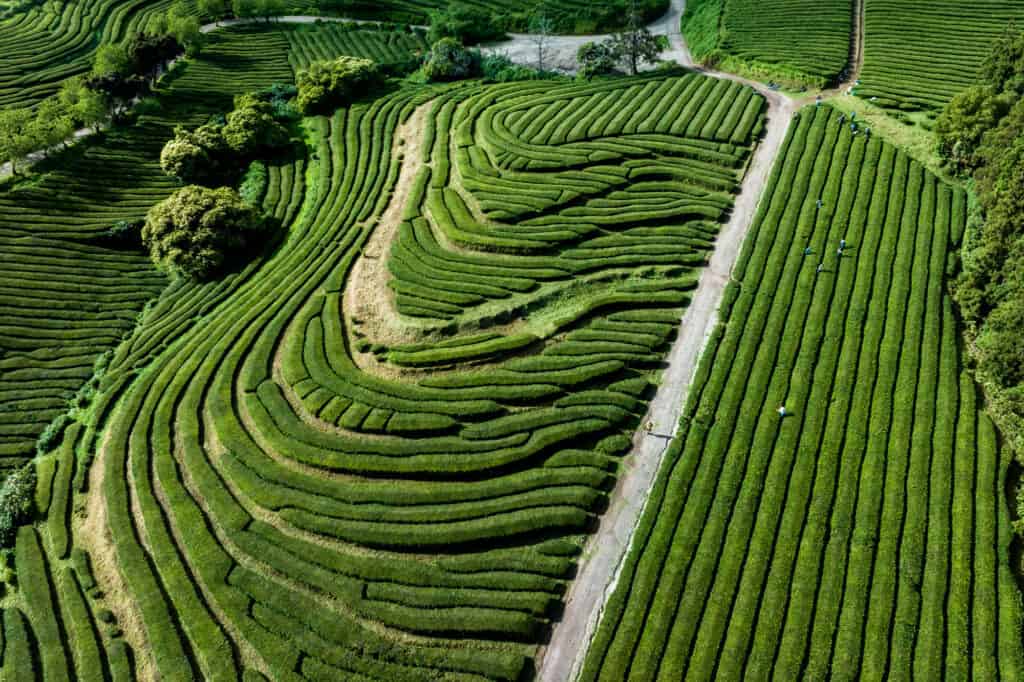
CHECK OUT OUR OTHER GUIDES TO THE AZORES:
